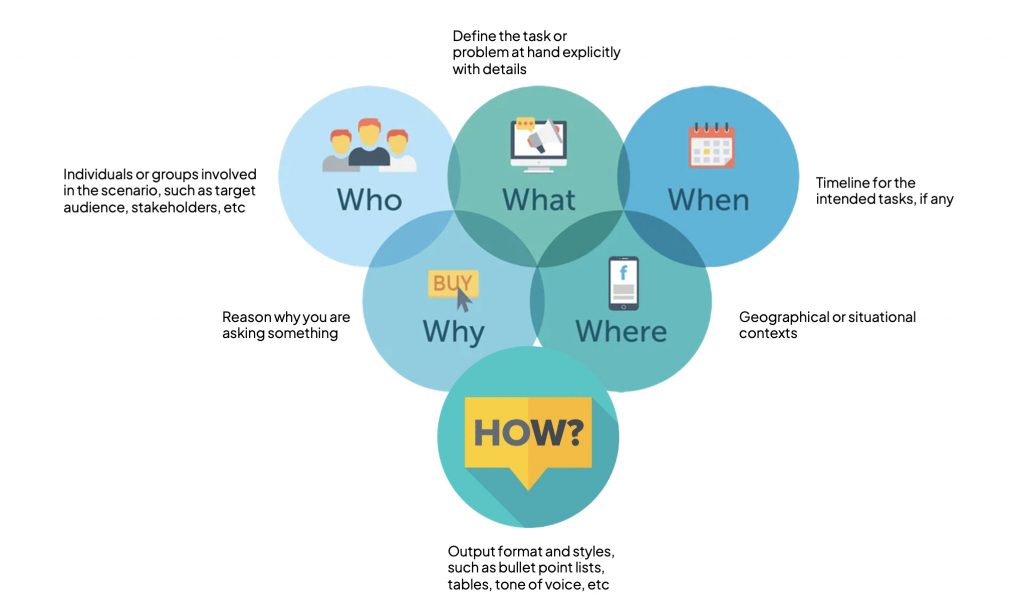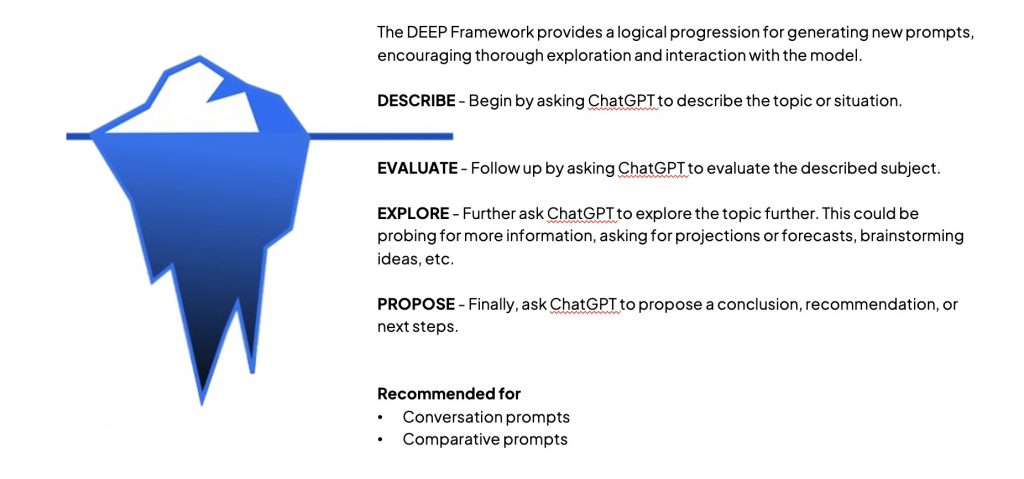The Art of Courting AI: Wooing GPT Models with the Right Prompts
As artificial intelligence (AI) starts to feel like that new neighbor who’s always over for a cup of sugar, a question keeps popping up: will AI snatch our jobs away? The answer is a resounding “not anytime soon”. AI is a hefty tool, but it’s not yet ready to steal the spotlight from human creativity, innovation, and our unmatched knack for decision-making. But those who choose to give AI the cold shoulder may find themselves eating dust. The secret sauce is in how we use these tools to add some zing to our work, life, and learning.
In this article, we’re about to spill the beans on how to craft the perfect pick-up lines, ahem, prompts for AI, specifically the Generative Pre-trained Transformer (GPT) models. We’ll also explore the world of large language models (LLMs), the most successful chat-up lines (prompt patterns), and the dating rules (best practices) when using prompts.
You can also watch the full webinar replay here.
Speed Dating with Large Language Models
Large language models like ChatGPT, the brainchild of OpenAI, are the AI sweethearts trained on a diet of enormous amounts of data. They can spin language outputs that sound so human-like, they could fool your grandma. These models are the jack-of-all-trades, dealing with tasks like summarization, classification, sentiment analysis, translation, and content creation.
Enter the dating pool of models like ChatGPT, Bard from Google, and the sensitive soul Claude from Anthropic, and you’re in for a wild ride! Each model has its charm and quirks. ChatGPT is renowned for its creative flair, while Claude is the gentleman with ethical guardrails, always careful with his responses. Bing Chat is based on ChatGPT anyway, so you don’t lose out if you use them, and it’s available in many more places!
The Charm of GPT Models
GPT models can pull a rabbit out of a hat with tasks like summarizing text, predicting context-based projections, transforming information, expanding on key points, and creating new chatbots.
For instance, we can feed a complex scientific concept into a GPT model and ask it to explain it like we’re a clueless teenager. The model will break down the concept into teen lingo, making it easier to grasp.
Another charm is asking the model to summarize a lengthy report into bullet points, providing us with the key points without the need to read the entire document like a bedtime story.
GPT models can also whip up creative content, like writing a poem based on a given scenario, making them the Shakespeare of AI.
Mastering the Art of Prompting: The 5W and DEEP Frameworks
Just as the way to a man’s heart is through his stomach, the way to an AI’s optimal performance is through well-cooked prompts. We’ve got two secret recipes for that: the 5W (Who, What, Why, Where, When, and How) and the DEEP (Describe, Evaluate, Explore, Propose) frameworks.

The 5W framework is like the perfect first date checklist, ensuring you’ve covered all necessary bases, giving the AI the right amount of info to make the best impression.

The DEEP framework, however, is like a romantic, candlelit dinner. It guides you through a series of questions, allowing you a systematic approach to savoring a problem or topic. You first describe the problem, evaluate it, explore the evaluation, then propose a toast to the conclusion.
The Dance of Prompt Patterns
Prompts can be as easy as a casual chat or as complex as a marriage proposal, depending on the tasks. They can be direct questions, fill-in-the-blanks, instructions, comparisons, hypothetical scenarios, or simple conversational prompts.
Another fancy footwork in the dance of prompts is “few-shot learning”. Here, we give the AI a few dance lessons (examples) to learn from before we hit the dance floor (pose the question). This method helps us guide the AI models to strut their stuff in high-quality output.
Best Practices for Prompting: The Rules of Engagement
When engaging with prompts, it’s crucial to be as specific as a Swiss watch and provide context. This clarity keeps the conversation smooth and allows the AI to generate more accurate results.
Another rule of thumb is to separate the instructions from the input using quotation marks or hashes. This separation acts like subtitles, helping the AI differentiate between the teaching information and the actual question.
Moreover, it’s beneficial to use chain-of-thought prompts, where we feed the AI bite-sized pieces of information, guiding its “thought process” to the desired output.
The Blind Spots of GPT Models
While GPT models can charm the socks off anyone with their capabilities, they do have their blind spots. For instance, they are not the best detectives when it comes to verifying information such as research results or background checks. Their information is based on their training data, and they do not actively search for up-to-date information like a sleuth. Therefore, it’s as essential as a cup of coffee in the morning to cross-check the facts provided by these models to ensure their accuracy.
The Last Dance: Conclusion
The future of work is doing the tango with AI, enhancing our productivity and creativity. Understanding how to churn out the perfect prompts for AI models is a dance move you need in this AI-driven dance floor. By providing specific and contextual prompts and leveraging frameworks like the 5W and DEEP, we can get GPT models to dance to our tunes.
However, it’s crucial to know the blind spots of these models and not rely entirely on their outputs, especially when it comes to fact verification. AI is a powerful dance partner, but it still needs us to lead the dance to get the most out of it.